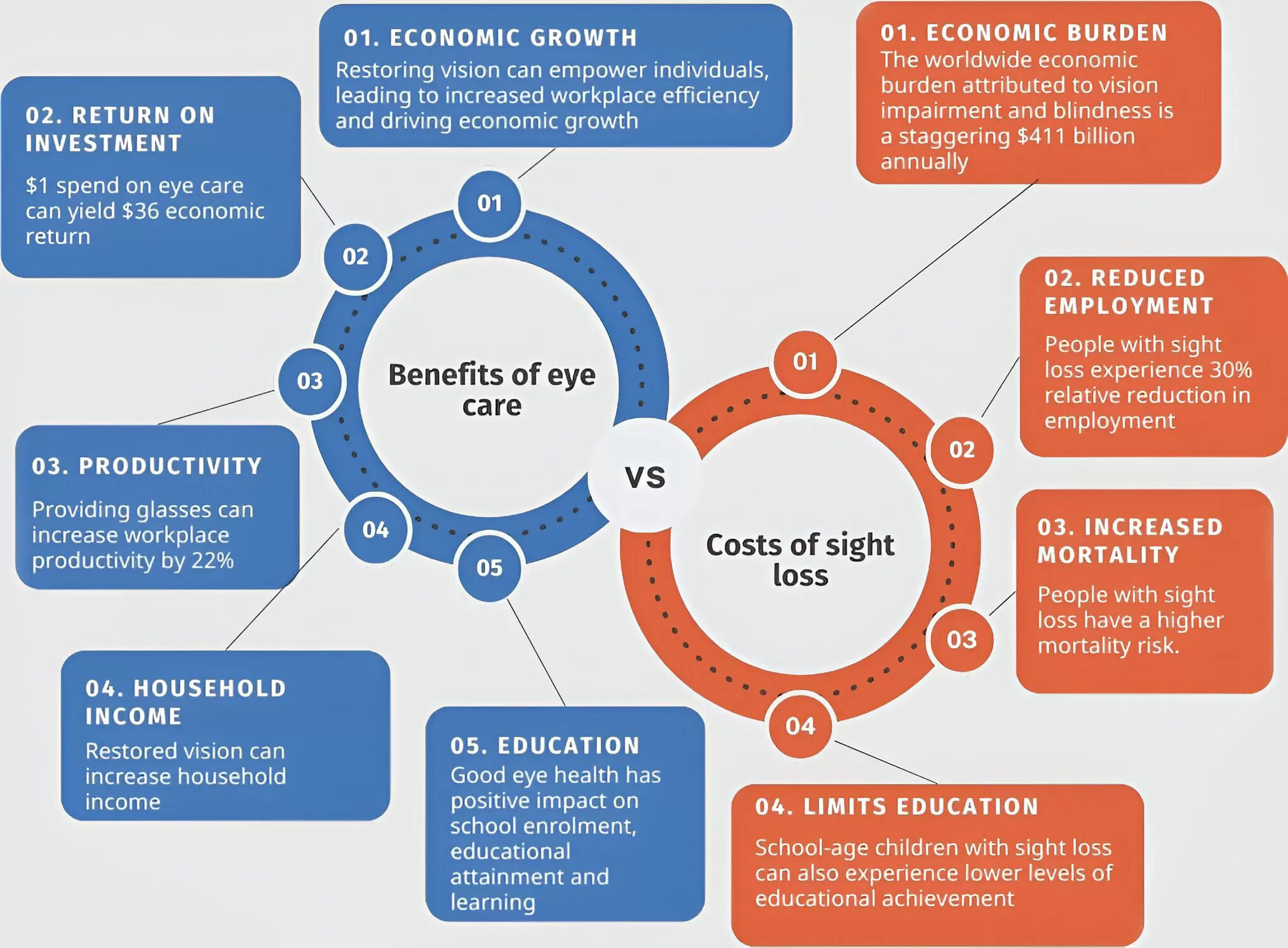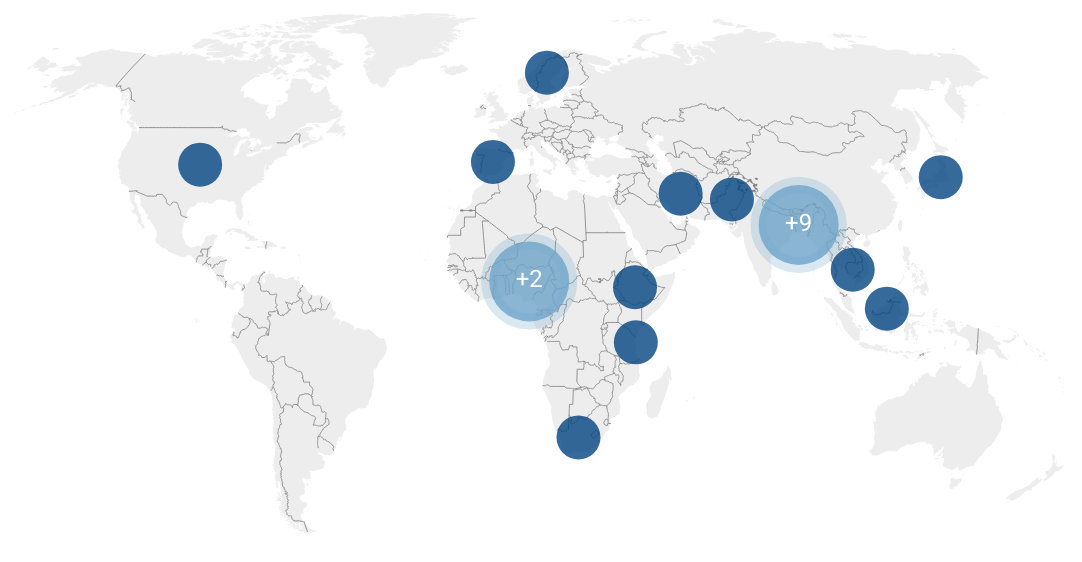- World Health Organization (WHO), “World report on vision,” Geneva, 9789241516570, 2019.
- M. Burton, “Lancet Global Health Commission on Global Eye Health: Vision Beyond 2020,” The Lancet Global Health, vol. 9, no. 4, pp. e489–e551, 2021.
- P. A. Reddy et al., “Effect of providing near glasses on productivity among rural Indian tea workers with presbyopia (PROSPER): a randomised trial,” The Lancet Global Health, vol. 6, no. 9, pp. e1019–e1027, Sep. 2018, doi: 10.1016/S2214-109X(18)30329-2.
- SEVA, “Eye health: a best buy in global health and development,” SEVA, Nov. 2023. Accessed: Nov. 10, 2023. [Online]. Available: https://www.seva.org/site/DocServer/SevaPolicyPaper_EyeHealth.pdf
- Deloitte and Roche, “Investment in Eye Health to Prevent Sight Loss.” Accessed: Sep. 12, 2023. [Online]. Available: https://www.deloitte.com/au/en/services/economics/analysis/vision-future-investing-eye-health-safeguard-sight.html
- A. P. Marques et al., “The economics of vision impairment and its leading causes: A systematic review,” eClinicalMedicine, vol. 46, p. 101354, 2022, doi: 10.1016/j.
- J. R. Ehrlich et al., “The Association Between Vision Impairment and Mortality : A Systematic Review and Meta-Analysis,” The Lancet Global Health, vol. in press, 2020, doi: 10.17605/osf.io/weu96.
- K. A. Eckert, V. C. Lansingh, M. J. Carter, and K. D. Frick, “Update of a Simple Model to Calculate the Annual Global Productivity Loss Due to Blindness and Moderate and Severe Vision Impairment,” Ophthalmic Epidemiology, 2022, doi: 10.1080/09286586.2022.2072899.
- S. Mannava, R. R. Borah, and B. R. Shamanna, “Current estimates of the economic burden of blindness and visual impairment in India: A cost of illness study,” Indian J Ophthalmol, vol. 70, no. 6, pp. 2141–2145, Jun. 2022, doi: 10.4103/ijo.IJO_2804_21.
- D. B. Rein et al., “The Economic Burden of Vision Loss and Blindness in the United States,” Ophthalmology, vol. 129, no. 4, pp. 369–378, Apr. 2022, doi: 10.1016/j.ophtha.2021.09.010.
- ILO and IAPB, “Eye Health and the World of Work,” International Labor Organization, Switzerland, 2023. Accessed: Oct. 20, 2023. [Online]. Available: https://www.ilo.org/wcmsp5/groups/public/@ed_protect/@protrav/@safework/documents/publication/wcms_892937.pdf
- A. Bastawrous and A. V. Suni, “Thirty Year Projected Magnitude (to 2050) of Near and Distance Vision Impairment and the Economic Impact if Existing Solutions are Implemented Globally,” Ophthalmic Epidemiology, vol. 27, no. 2, pp. 115–120, 2020, doi: 10.1080/09286586.2019.1700532.
- The Fred Hollows Foundation and Victoria University Institute of Strategic Economic Studies, “Transforming Lives: An Investment Case for Eye Health,” The Fred Hollows Foundation, 2023. Accessed: Aug. 01, 2023. [Online]. Available: https://www.hollows.org/Upload/FHFV3/Media/au/pdf/Reports/Investment-Case-Final-Report.pdf
- X. Tan et al., “Impact of Cataract Surgery on Income in Rural Southern China: The SUCCESS Randomized Controlled Trial,” The Asia-Pacific Journal of Ophthalmology, vol. 12, no. 4, p. 355, Aug. 2023, doi: 10.1097/APO.0000000000000624.
- B. R. Shamanna, R. R. Borah, S. Sheeladevi, and D. Chandra, “Cost-benefit analysis of investing in child eye health,” University of Hyderabad, Orbis, 2022.
- ATscale Global Partnership for Assistive Technology, “The Case for Investing in Assistive Technology.”
Join a powerful, unprecedented alliance for better eye health for all.
Join IAPB









